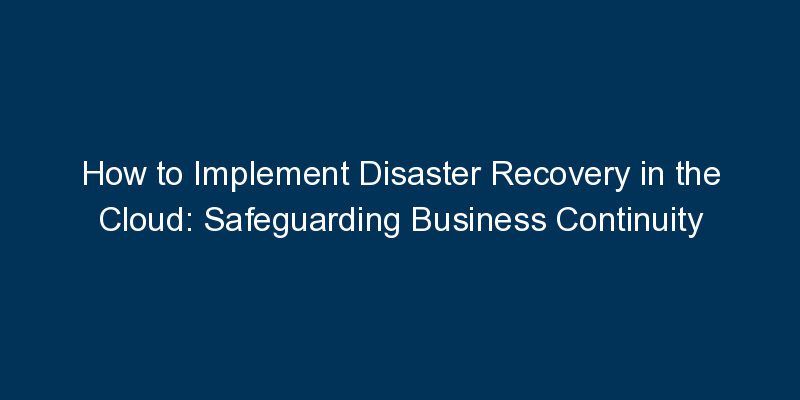Disasters can strike at any time, and organizations must be prepared to recover swiftly and efficiently. This blog provides a comprehensive guide on how to implement disaster recovery in the cloud, leveraging the scalability and resilience of cloud services to safeguard business continuity.
Introduction:
Disaster recovery (DR) is a crucial aspect of business continuity planning. The cloud offers unique advantages for implementing disaster recovery strategies, providing scalability, cost-effectiveness, and accessibility. This guide explores the steps involved in setting up a robust disaster recovery plan in the cloud.
Key Steps to Implement Disaster Recovery in the Cloud:
- Risk Assessment and Business Impact Analysis: Conduct a thorough risk assessment and business impact analysis to identify potential threats and understand their implications on business operations.
- Selection of Cloud Service Provider: Choose a reliable cloud service provider that aligns with your disaster recovery requirements. Consider factors such as geographic redundancy, data center reliability, and service-level agreements.
- Data Backup and Storage: Implement a robust data backup strategy, ensuring regular and secure backups of critical data. Utilize cloud storage solutions to store backups in geographically dispersed locations.
- Replication of Workloads: Set up the replication of critical workloads and applications to a secondary cloud region. This ensures that in the event of a disaster, operations can seamlessly transition to the secondary location.
- Automation of Disaster Recovery Processes: Leverage automation tools to orchestrate and automate the disaster recovery processes. Automation reduces the recovery time objective (RTO) and minimizes manual intervention.
- Testing and Validation: Regularly test your disaster recovery plan to validate its effectiveness. Conduct simulated disaster scenarios to ensure a smooth transition and identify areas for improvement.
Conclusion:
Implementing disaster recovery in the cloud is a strategic investment in ensuring business continuity. By following the steps outlined in this guide, organizations can leverage the benefits of cloud services to create a resilient and efficient disaster recovery plan.






















Comments